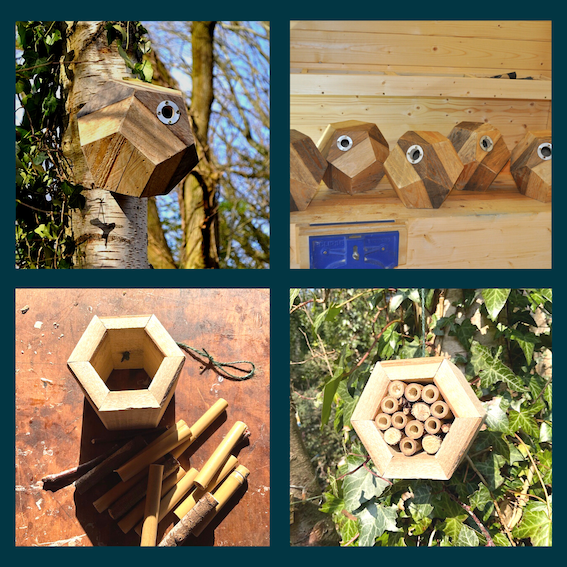During the Covid19 Lockdown we spent more time at home and in our gardens. With a dramatic decrease in road and air traffic noise, it was possible to notice the rising volume of the chirps and trills of birdsong in our gardens and parks. It was reported in the media that the sound and sighting of birds across the UK were having positive effects on our mental health and the ability to manage the long period of isolation.
During the Winter Lockdown of 2021, with spring approaching, I read an article stating that the loss of hedgerow trees, changes to woodland management and the increasing urbanisation have contributed to a decline in available natural sites for nesting species of birds like Blue Tits. With this in mind, I decided to act by making nesting boxes within my studio. By using the design principles of my geometric sculptures, I made 8 birdboxes from recycled wood. Four were placed in trees in the green spaces outside the galleries my project Nothing is Immediate was exhibited in.
This year, in addition to birdboxes, I’m making and installing hexagonal bee hotels from recycled materials. Solitary bees are important pollinators in our gardens. There is a decline in their natural habitat, which provides shelter and a place where certain types of bees can nest and lay their eggs. I’m planning on running bee hotel workshops for children, as it offers them a chance to connect with and look after nature.


No Comments